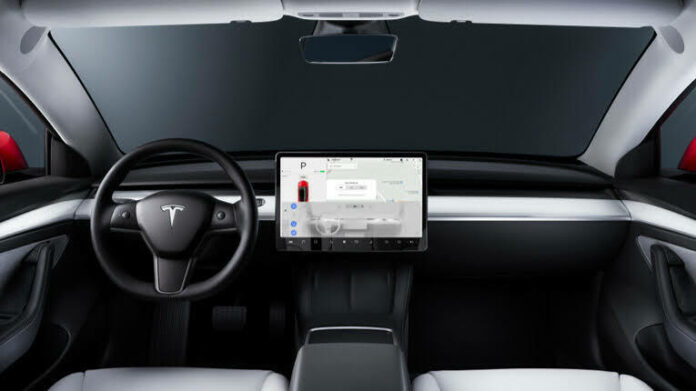Elon Musk is aiming for a “wide release” of Tesla’s long-awaited full self-driving (FSD) beta for all Tesla owners by the end of this year—”probably a month from now,” he said during a Wednesday Q3 earnings call.
He also said anyone who buys a new Tesla going forward will have access to FSD, as long as they can cough up the extra $15,000 it costs to receive it via a vehicle software update.
“The safety we’re seeing when the car is in FSD mode is significantly improved over when it is not, which is a key criteria to releasing the beta,” Musk said on the call.
As of July, Tesla had 100,000 “city streets” FSD beta testers. The Autopilot feature has been met with mixed reviews(Opens in a new window) and even lawsuits that claim Musk has overstated its features and not produced anything near “full self driving” to this point. Federal regulators are also investigating crashes involving Autopilot.
When pressed by an investor on the call as to which level of self-driving FSD will fall under, with five being the highest level to the point of not requiring a steering wheel at all, Musk resisted specifying either four or five.
“It’s not quite ready to have no one behind the wheel, but you will almost never have to touch the vehicle controls,” he said. “When I came to the GigaTexas [factory] today from a friend’s house, I never touched any controls on the way here. We are getting there. In fact, we are almost there.”
Regarding the Cybertruck, another long-awaited product, Musk confirmed the company is in the “final lap” and is currently building it at its Austin, Texas, facility.
The Tesla Cybertruck.
(Credit: Tesla)
“Yeah, that car’s gonna be sick,” Musk said. “Hall of famer. Next level. Sorry it took longer than expected, but there were a few things that got in the way, like insane global supply chain issues.”
After the Cybertruck, Musk said the next big vehicle launch will be a smaller, cheaper vehicle—the exact opposite of its new Semi trucks, which Pepsi should receive the first shipment of in December.
“Our next generation vehicle will be about half the cost [of the Tesla Model X, Y], it’ll be smaller, but it will swiftly exceed production of all our other vehicles combined,” Musk said.
Tesla is still working through issues scaling production of its current vehicles. In the third quarter, Tesla produced over 365,000 vehicles and delivered over 343,000 vehicles to customers. Investors expected(Opens in a new window) Tesla to deliver closer to 364,000, and Tesla stock sank 5%(Opens in a new window) at the news.
Recommended by Our Editors
To explain the gap in expected deliveries, Musk cited difficulties in transporting the vehicles. “There weren’t enough boats, trains, and car carriers to support [deliveries]—Tesla got too big,” he said.
Tesla’s current passenger car lineup.
(Credit: Tesla)
The formal production update(Opens in a new window), released a few weeks ago, tempered that messaging a bit, citing an issue securing transportation at a “reasonable cost.”
Tesla’s habit of building up production toward the end of the quarter exacerbates delivery issues by creating a peak delivery time and constraining transit options. The company plans to improve the delivery process by spreading deliveries out over the quarter rather than allowing them to build up, according to a Q3 shareholder presentation(Opens in a new window).
Musk’s dreams of grandeur, meanwhile, have only grown, as he said on the call that he believes for the first time that Tesla has a path to becoming bigger than Apple and Saudi Arabian Oil Company, both $2 trillion companies, combined. He expects the energy storage business—meaning batteries like the Tesla Powerwall(Opens in a new window)—to play a huge role in getting it there.
Get Our Best Stories!
Sign up for What’s New Now to get our top stories delivered to your inbox every morning.
This newsletter may contain advertising, deals, or affiliate links. Subscribing to a newsletter indicates your consent to our Terms of Use and Privacy Policy. You may unsubscribe from the newsletters at any time.
Hits: 0


















